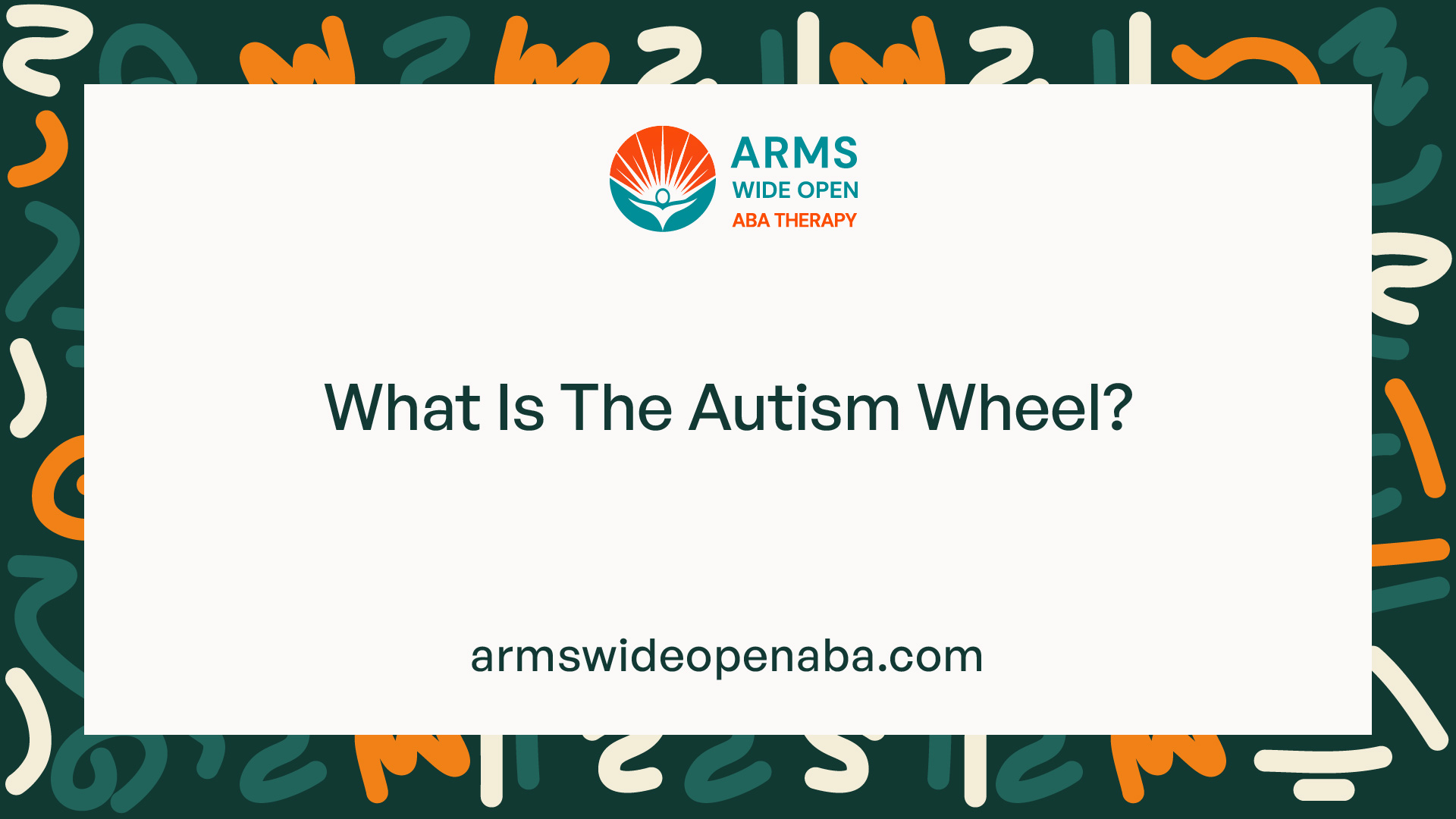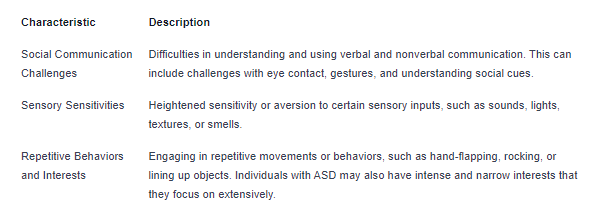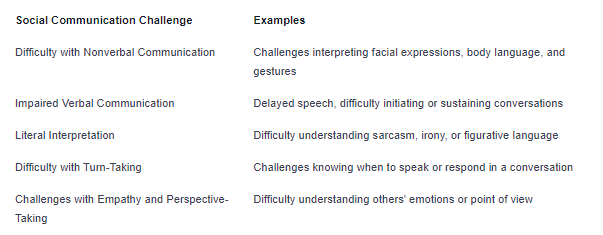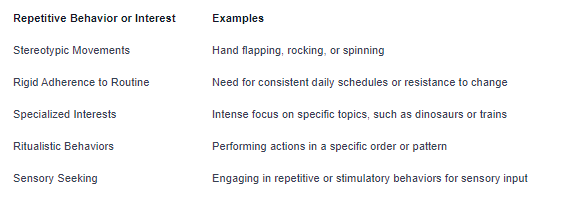What Is The Autism Wheel?
Unlocking the mystery of the Autism Wheel: Discover its purpose in understanding and supporting individuals with autism.

Understanding Autism Spectrum Disorder (ASD)
To comprehend the purpose and significance of the Autism Wheel, it is important to first have a solid understanding of Autism Spectrum Disorder (ASD) itself. This section will provide an overview of what ASD is and highlight some common characteristics associated with it.

What is Autism Spectrum Disorder?
Autism Spectrum Disorder, commonly referred to as ASD, is a neurodevelopmental disorder that affects individuals in various ways. It is characterized by challenges in social interaction, communication, and the presence of repetitive behaviors or interests. ASD is a spectrum disorder, meaning that it encompasses a wide range of symptoms and levels of severity.
Common Characteristics of ASD
While the symptoms and their severity can differ from person to person, there are some common characteristics often associated with Autism Spectrum Disorder. These include:

It is important to note that these characteristics are not exhaustive and can manifest differently in each individual with ASD. The Autism Wheel serves as a visual representation of these characteristics, providing a framework to better understand and support individuals on the autism spectrum.
By understanding the fundamental aspects of Autism Spectrum Disorder and recognizing the common characteristics associated with it, we can gain a deeper appreciation for the purpose and significance of the Autism Wheel in enhancing understanding, promoting acceptance, and providing appropriate support for individuals with ASD.
Introducing the Autism Wheel
The Autism Wheel is a visual tool that helps to illustrate the complexity and diversity of Autism Spectrum Disorder (ASD). It provides a framework for understanding the different aspects of ASD and how they interact with one another. By using the Autism Wheel, individuals can gain a clearer perspective on the multifaceted nature of autism.
What is the Autism Wheel?
The Autism Wheel is a representation of the spectrum of Autism Spectrum Disorder. It depicts the various domains and characteristics that are commonly associated with autism. The wheel is divided into different sections, each representing a specific aspect of autism. These sections are interconnected, emphasizing the interplay between different areas of functioning.
The Autism Wheel serves as a visual tool to promote understanding and awareness of autism. It helps to explain that autism is not a singular condition but rather a spectrum with a wide range of strengths, challenges, and individual differences.
Purpose and Function of the Autism Wheel
The purpose of the Autism Wheel is to provide a comprehensive overview of the different components and dimensions of autism. It helps to break down the complexities of autism into more digestible and relatable parts. The wheel allows individuals to see how various characteristics, such as sensory sensitivities, social communication challenges, and repetitive behaviors and interests, are interconnected and influence one another.
The Autism Wheel functions as a guide for professionals, caregivers, and individuals with autism themselves. It assists in identifying the strengths and challenges of individuals on the spectrum, tailoring interventions and support based on their unique needs, and promoting acceptance and inclusion.
By utilizing the Autism Wheel, individuals can gain a deeper understanding of autism and foster empathy towards those on the spectrum. It encourages a holistic and person-centered approach to supporting individuals with autism, recognizing their individuality and providing targeted interventions that address their specific strengths and challenges.
Components of the Autism Wheel
The Autism Wheel provides a comprehensive framework for understanding the diverse characteristics of Autism Spectrum Disorder (ASD). Within the Autism Wheel, there are three main components that help elucidate the complexities of ASD: sensory sensitivities, social communication challenges, and repetitive behaviors and interests.
Sensory Sensitivities
Individuals on the autism spectrum often experience heightened or diminished sensitivities to sensory stimuli. This can manifest in various ways, such as being hypersensitive to certain sounds, textures, or lights, or being hyposensitive and seeking sensory input. These sensory sensitivities can significantly impact an individual's daily life, influencing their ability to navigate and engage with their environment.
Common sensory sensitivities include:

Understanding an individual's sensory sensitivities is crucial in creating a supportive environment that minimizes sensory overload and promotes their comfort and well-being.
Social Communication Challenges
Individuals with autism often experience difficulties in social communication. This can manifest in challenges related to verbal and nonverbal communication, understanding social cues, and engaging in reciprocal conversations. These challenges can vary widely among individuals on the spectrum and may impact their ability to form and maintain social relationships.
Common social communication challenges include:

Recognizing and accommodating these social communication challenges can foster effective communication and promote meaningful social interactions for individuals on the autism spectrum.
Repetitive Behaviors and Interests
Repetitive behaviors and interests are hallmark features of autism. These behaviors and interests often provide comfort, predictability, and a way for individuals with autism to engage with their surroundings. Repetitive behaviors can include repetitive movements (such as hand flapping or rocking), adherence to strict routines, or intense fixation on specific topics or objects.
Common repetitive behaviors and interests include:

Understanding and respecting an individual's repetitive behaviors and interests can help foster a sense of security and provide opportunities for engagement and self-expression.
By recognizing and appreciating the components of the Autism Wheel, we can gain a deeper understanding of the unique challenges and strengths of individuals on the autism spectrum. This knowledge can guide the development of tailored interventions and support systems, ultimately promoting acceptance, inclusion, and a more inclusive society for individuals with autism.
How the Autism Wheel Helps
The Autism Wheel serves as a valuable tool in understanding and navigating Autism Spectrum Disorder (ASD). It provides insights into the diverse range of characteristics and challenges that individuals on the spectrum may experience. Let's explore how the Autism Wheel aids in visualizing the spectrum, promotes an individualized approach to support, and enhances understanding and empathy.
Visualizing the Spectrum
The Autism Wheel helps visualize the spectrum of Autism Spectrum Disorder. By representing the spectrum as a wheel, it emphasizes the idea that autism is a continuum, with individuals exhibiting a wide range of abilities and challenges. The wheel illustrates that autism is not a singular condition but encompasses a diverse array of strengths, weaknesses, and characteristics.
Individualized Approach to Support
One of the key benefits of the Autism Wheel is its emphasis on an individualized approach to support. Recognizing that every person with autism is unique, the wheel encourages a tailored approach to intervention and assistance. It highlights the importance of understanding each individual's specific strengths, challenges, and needs, leading to personalized strategies and interventions.
The Autism Wheel recognizes that what works for one person on the spectrum may not work for another. It encourages professionals, educators, and caregivers to adapt their support methods to meet the unique requirements of each individual. This person-centered approach promotes effective and meaningful support for individuals with autism.
Enhancing Understanding and Empathy
The Autism Wheel also plays a crucial role in enhancing understanding and empathy towards individuals with autism. By visually representing the spectrum and its various components, it fosters a deeper understanding of the challenges and strengths associated with autism.
The wheel helps to dispel misconceptions and stereotypes by showcasing the broad range of characteristics and abilities found within the autism community. It promotes empathy by encouraging individuals to recognize and appreciate the unique perspectives and experiences of people on the spectrum.
Through increased understanding and empathy, the Autism Wheel aims to create a more inclusive and accepting society. It encourages the celebration of neurodiversity and fosters an environment that supports individuals with autism, enabling them to thrive and reach their full potential.
The Autism Wheel serves as a valuable tool in understanding and navigating the complexities of Autism Spectrum Disorder. By visualizing the spectrum, promoting individualized approaches to support, and enhancing understanding and empathy, it contributes to a more inclusive and supportive environment for individuals with autism.
Using the Autism Wheel in Practice
The Autism Wheel serves as a valuable tool for understanding and supporting individuals with Autism Spectrum Disorder (ASD). By utilizing the Autism Wheel in practice, professionals, caregivers, and educators can gain insights into the strengths and challenges of individuals on the autism spectrum. This section explores how the Autism Wheel can be applied in practical settings to improve interventions, support, acceptance, and inclusion.
Identifying Strengths and Challenges
One of the key benefits of using the Autism Wheel is its ability to help identify the unique strengths and challenges of individuals on the autism spectrum. By considering the different components of the Autism Wheel, such as sensory sensitivities, social communication challenges, and repetitive behaviors and interests, a comprehensive picture of an individual's needs can be formed.

Understanding an individual's strengths allows for the identification of areas where they may excel, providing opportunities for growth and development. Recognizing their challenges helps in tailoring support and interventions to address specific needs effectively.
Tailoring Interventions and Support
The Autism Wheel assists in tailoring interventions and support to meet the unique requirements of individuals with ASD. By recognizing their strengths, professionals, caregivers, and educators can create strategies that leverage their abilities and interests. For example, incorporating a special interest into educational activities or using visual supports to enhance communication can be effective interventions.
Furthermore, understanding the challenges associated with sensory sensitivities, social communication, and repetitive behaviors allows for the development of targeted interventions. For instance, providing a quiet space or sensory accommodations can help individuals manage sensory overload, while social skills training and social stories can aid in improving social communication.
Promoting Acceptance and Inclusion
The Autism Wheel also plays a vital role in promoting acceptance and inclusion. By increasing awareness and understanding of ASD through the use of the Autism Wheel, misconceptions and stereotypes can be challenged. This leads to the creation of a more inclusive and supportive environment for individuals with autism.
By sharing information about the Autism Wheel with the community, educators, and other professionals, a greater understanding of the diverse experiences and needs of individuals with ASD can be fostered. This, in turn, encourages acceptance, empathy, and inclusion in schools, workplaces, and communities.
In conclusion, the Autism Wheel is a valuable tool that can be used to identify strengths and challenges, tailor interventions and support, and promote acceptance and inclusion for individuals with Autism Spectrum Disorder. By utilizing the insights provided by the Autism Wheel, professionals and caregivers can create a more inclusive and supportive environment that celebrates the unique abilities of individuals on the autism spectrum.
Conclusion
The Autism Wheel is a powerful tool that can help individuals gain a comprehensive understanding of autism and its various components. By recognizing the diverse strengths and challenges of individuals on the spectrum, we can create a more inclusive and supportive environment that fosters growth, development, and acceptance.
The Autism Wheel emphasizes the importance of an individualized approach to support that recognizes each person's unique needs and abilities. It encourages professionals, caregivers, and educators to tailor their interventions to address specific challenges effectively.
Moreover, by enhancing our understanding of autism through the Autism Wheel, we can promote empathy towards individuals with autism. This leads to greater acceptance and inclusion in schools, workplaces, and communities.
Overall, the Autism Wheel provides a valuable framework for understanding autism as a continuum of diverse abilities and characteristics. By utilizing this tool in practice, we can create a more supportive environment for individuals with autism that enables them to thrive and reach their full potential.
Sources
https://www.crossrivertherapy.com/autism/wheel
https://www.abtaba.com/blog/autism-spectrum-wheel
Similar articles
We’re here to help you

Our team is here to assist you in this process. Contact us for any assistance.
it’s easy to apply
We Accept Most Insurances
Our in-network insurance partnerships make ABA therapy more accessible to families throughout our service areas.







Our Insurance Process
We'll request your insurance details to help us verify your plan's coverage for ABA therapy. Once we've received this information, we'll walk you through your benefits, including copayments, deductibles and out-of-pocket maximums, so you know what to expect in advance.
Our team will then handle the preauthorization and all the necessary paperwork.
.svg)





















.jpeg)


































.jpeg)




.jpeg)







.jpeg)











.jpeg)
















